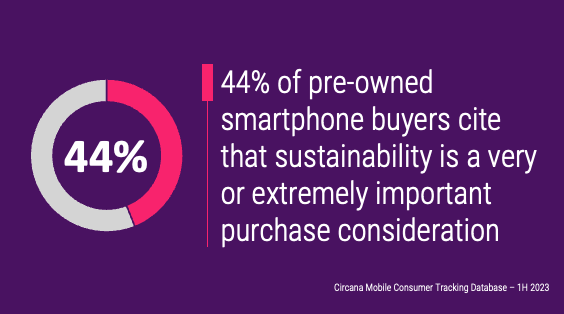
The premise of this year’s Mobile World Congress (MWC) was no different than in previous years as mobile ecosystem players once again highlighted their latest innovation in network technologies and terminals reshaping our daily lives. The difference this year was how prominent the generative AI (GenAI) theme featured in the show. Of course, GenAI is not exactly new news by this point, but MWC 2024 was the inflection point for AI on the path from theory to commercialization. Almost every vendor briefing included an AI pitch, but unlike in the past when the vendors talked about how future could bring smart assistants that can take the initiative and change the alarm clock based on traffic conditions, this time they were presenting actual examples. Here are some major themes and trended we spotted at the show:
AI Smartphones:
Samsung’s decision to debut the AI-powered Galaxy S24 a month earlier than its regular launch regime was a smart move to capitalize on the Gen AI buzz. The challenge for many handset vendors will be to back their AI claim with possible legitimacy: what exactly does a smartphone need to have inside to be an AI smartphone? The consensus so far, similar to the PC space, is that the device must have AI-capable silicon under the hood. Essentially, any phone that runs on Qualcomm’s latest Snapdragon 8 Gen 3 chipset (which powers the Samsung Galaxy S24), or anything with similar NPU performance, will be considered and marketed as an AI phone. But device vendors will need to get creative and produce additional touches to differentiate beyond the standard Google AI features that will be available on all AI Android phones. More to the point, will consumers care if the phone is AI-powered or not? That will come down to what the AI “powers”… what features are new and differentiate the device. Circana Connected Intelligence’s preliminary survey results reveal that the AI value proposition resonates with consumers. Stay tuned for our upcoming reports that uncover this topic.
GenAI: On Device or On Cloud?
The proliferation of high-NPU chipsets now allow for the AI computing take place on the actual device rather than the cloud. The on-device versus cloud topic was quite popular around the show as MWC 2024 is a telecom show at heart and low-latency cloud computing (Edge Computing) has been an important 5G benefit highlighted by carriers on their quest for monetizing their 5G networks. While both routes will collectively be relevant for the industry, on-device GenAI has made more noise due to privacy/security benefits. The buzz was created by the silicon and device vendors; Qualcomm was (rightfully) at the forefront of the buzz as the maker of the industry’s most powerful AI chipset for phones. Notably, Qualcomm also received accolades for powering many of the smartwatches and AR/VR hardware presented by vendors at MWC 2024.
New Mobile Device Debuts:
As in the previous years, the spotlight was on Chinese smartphone makers as they announced various new flagships at the show.
- Xiaomi released its latest 14 series superphone (we can call it an AI phone since it is powered by Snapdragon 8 Gen 3).
- Honor, which is rapidly expanding in the European region as its toxic Huawei ties are now a distant memory, launched the new Magic 6 Pro smartphone, which is full of Honor-exclusive AI features. Honor also released a Porsche-branded version of its Magic V2, the world’s thinnest foldable smartphone.
- Samsung launched its much-anticipated activity tracker Ring. Samsung also used the MWC traffic to announce the availability of its new Galaxy Book 4 AI-accelerated laptop series, which were previously introduced at CES. The new Book 4 series support Microsoft’s new copilot AI assistant, which should also assist PC makers convince users upgrade to a new AI-powered laptop.
- Motorola, as in the previous years, took the stage to show off innovative hardware designs. Last year’s rollable Motorola Rizr phone changed form this year as the vendor showed off a fully rollable/bendable version that goes around the wrist. Motorola also showed us its new Smart Connect platform that allows for continuity between Motorola phones and Android-powered tablets and Microsoft PCs.
- OnePlus made a splash at the show with the debut of its new Smartwatch 2, which now supports Wear OS while offering up to 100 hours of battery life (the longest in the Wear OS space).
Sustainability Ecosystem
The EU is known for its perseverance to list sustainability as a primary agenda item in any private and public sector, and mobile is no different (it was the EU who pushed Apple to migrate to the USB-C standard). The sustainability theme was discussed both on the network side around energy efficiencies as well as the device production side (which is nothing new). It was also quite refreshing to see the Netherlands-born Fairphone, which lead the market in carbon emission rates per phone produced, thus getting a shot at winning large enterprise and public sector contracts with its environmentally friendly models.


